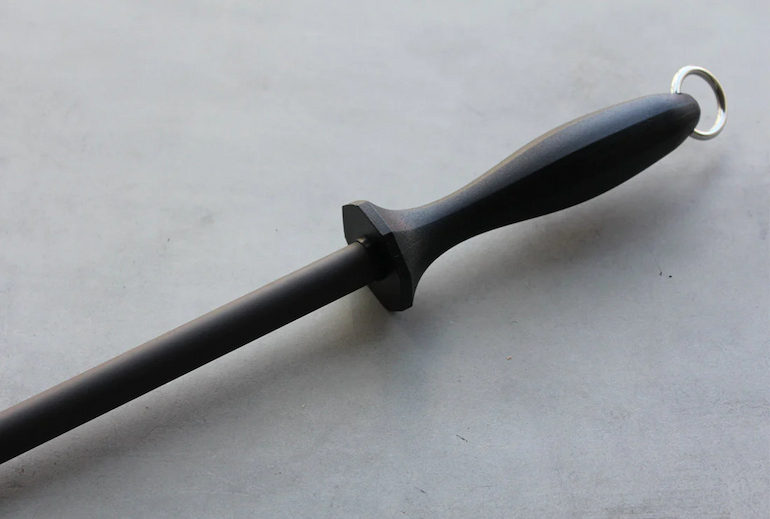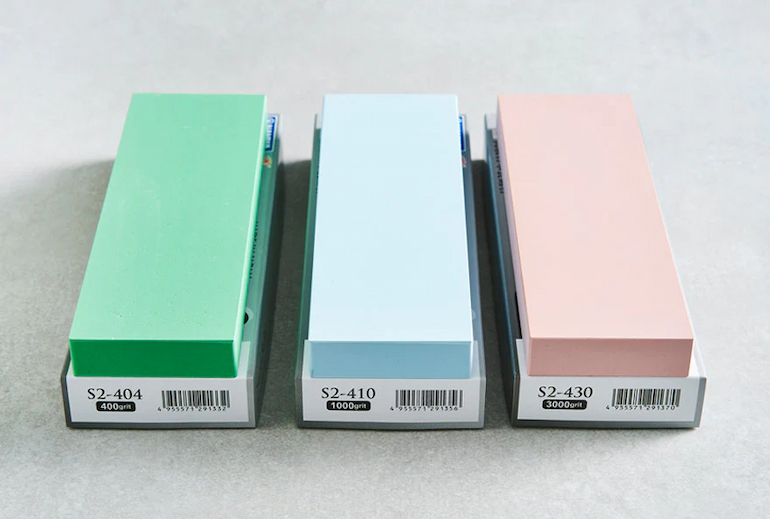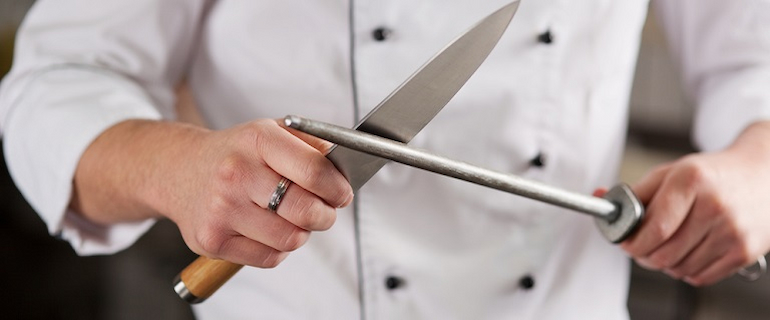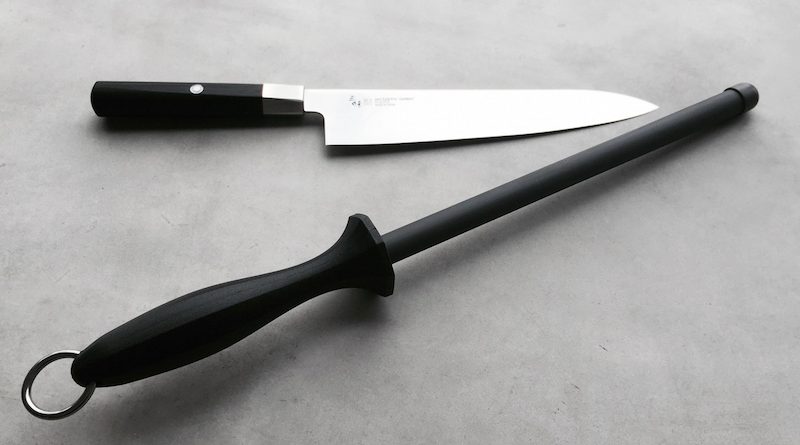Keeping Your Japanese Knives Sharp: Honing Steel vs. Knife Sharpening Steel
Once you start using knives, they get worn out just like any other item in the house. This includes top-notch designs like the Japanese knives which are considered state-of-the-art worldwide. They’ll start having jagged edges that can be seen only under a microscope, but be able to notice a difference in the way they help you prep the foods. Once the edges are affected, it won’t be long before the knife becomes dull.
Therefore, it’s important not only to sharpen your knives regularly, but also to maintain them. Still, when it comes to maintenance and sharpening, many confuse the terms knife sharpening steel and honing steel. Although similar, they are two different methods and serve different purposes. So, which one should you use for Japanese knives?
To find out, keep on reading.
Sharpening vs Honing: How Are They Similar and How Are They Different?
So, what does it mean to sharpen your knife or hone it? Both are used to enhance the original shape of your knife and add sharpness to the edges. That said, many people get confused about the nuances between the two. Some think that to hone or sharpen your stone means the same, while others wonder whether they should sharpen their knife or use honing.
Sharpening

Japanese knives are fine, more balanced knives than traditional Western knives and are more comfortable to work with. Due to their nature, it is important to use only ceramic sharpening steel to avoid damaging the blade.
A reliable knife sharpening steel is used to restore the original sharpness of your blunt knife. It has an abrasive layer to help remove enough metal particles to create a new edge. The sharpening steel can be made of ceramic or diamond. Japanese knives cannot be sharpened with just any kind of steel.
Sharpening helps fix the bums and dents on the blade and should be used to extend the lifespan of your knife. You want your knife to be sharp enough to cut the hair of your arm. If your knife is extremely dull and you have never sharpened it, well, it’s about time. Your knife can do only so much after years of constant use.
Use ceramic steel to sharpen your Japanese knife. Drive the heel of your knife down and press the blade against the abrasive surface in a gliding motion. Glide your knife back and forth from both sides.
To make sure your knife is sharp enough, perform a simple cutting test. Grab a paper and cut it from the heel, all the way down to the tip. This technique ensures that the blade is sharp along the whole surface, not just the top of your knife.
Honing
To hone Japanese knives, use only a quality ceramic sharpening rod. Ceramic is much gentler on Japanese knives than diamond or metal steel and will not damage the blades.
Honing is not sharpening. It will not sharpen your blunt knife. Instead, honing is used to strengthen and realign the edges of the blade. Honing is bending the metal into a straight line. However, honing should be a regular part of sharpening. Honing is essential for maintaining the shape of your blade.
You sharpen the knife when it’s blunt to remove enough metal from your blade and restore the sharp edges. Honing does not remove metal from the knife. You use honing to realign the edges to a V shape. If you hone enough your knife, you can use sharpening less frequently and add a few more years to your knife’s lifespan. Honing keeps the sharpness of the knife for longer and saves you time in the kitchen.
Whetstone Sharpening

Whetstones have been around for years and have only become more popular in recent times. They are naturally made stones, synthetic or ceramic whetstones whose abrasive surface is ideal for sharpening Japanese knives. They come in a variety of different grits that range from 220 to 12000.
What grit should you use depends on how dull your knife is. For instance, if your knife is damaged and dull, you would want to use a grit under 1000. That’s because smaller numbers of grit indicate higher abrasiveness which is suitable for very blunt blades – the smaller the number, the coarser the grit. But if the blade is still in somewhat good shape, using anything above 1000 is perfectly fine.
Most whetstones require to be soaked in water for at least 10 to 20 minutes. However, some whetstones do not require pre-soaking. All you need to do is just splash some water over the stone to start with the sharpening. Today there is a wide range of whetstones to be found such as single whetstones and double-sided whetstones. Some are faster cutting and some are longer lasting.
How to Use Ceramic Honing?
Using the honing rod to fix the blade takes much less time than sharpening. It’s a straightforward process that is very easy to learn and requires practice to perfect it.
Here’s how to do it the proper way:
Step one – first, make sure to match the angle of your knife. Japanese knives have a 15-20 degree angle. To achieve that angle, bring the blade straight across at a 90-degree angle.
Then, come at a half of that so it brings you to 45 degrees. Another half of that is 25 degrees. Slightly bend over the knife one more time to bring you closer to the preferred angle. Don’t worry if you’re being 100% precise with the angle. This is a rough estimation.
Step two – keep your wrist and elbow locked and use your shoulder to start moving the knife along the rod at the pre-set angle.
Step three – Use light motions. You do not need to use pressure when holding the knife’s handle and gliding the knife along the rod.
Step four – Make 5 to 10 strokes on each side of the knife separately. Then you can start to alternate between sides to even out the edges. Make sure to use the full length of the blade when honing.
Step five – Clean your blade to remove steel shavings.
Step six – Test the sharpness of the knife.
How Often Should a Knife Be Sharpened?

Sharpening and honing depend on how often you use your knife. Some prefer to hone their knives just once a week, while others do honing after every cutting to maintain the sharpness. Honing is a less abrasive process and it does not damage the blade even if done more frequently, like a couple of times a week.
On the other hand, remember that sharpening is a destructive process in which you remove metal particles from the blade. It naturally makes sense that if you’re doing a full sharpening every week or so, you risk damaging the blade rather sooner. Sharpening should be done every two months or less.
Again, it all depends on how frequently you use the knife. If you use it every day, you can sharpen it every month.

